Home Hi-Tech Audio / Video / TV / Streaming ,,,,, Cyber Layman holds YI Action Gimbal, the three-axis motorized stabilizer, designed to work with YI Technology cameras, namely, Yi 4K, Yi Lite and Yi 4K +. Here's how it went, and the video showing it in action.
Aesthetics, design, shape and size are very similar to other gimbals of the same genre. Unlike others we tested, however, you immediately feel a positive element inherent in the weight. This Yi Action Gimbal weighs less than other competitors, just over 310 grams. This is not a small detail, considering that heavier gimbals, in the long run, tire the arm, making long-lasting shooting more difficult.
Made mostly of matte black plastic, it grips particularly well, offering the control stick at the top of the handle, right where you'd expect to find it, and right where your thumb goes. The control panel presents a first novelty, which represents the real difference of this gimbal, compared to the others.
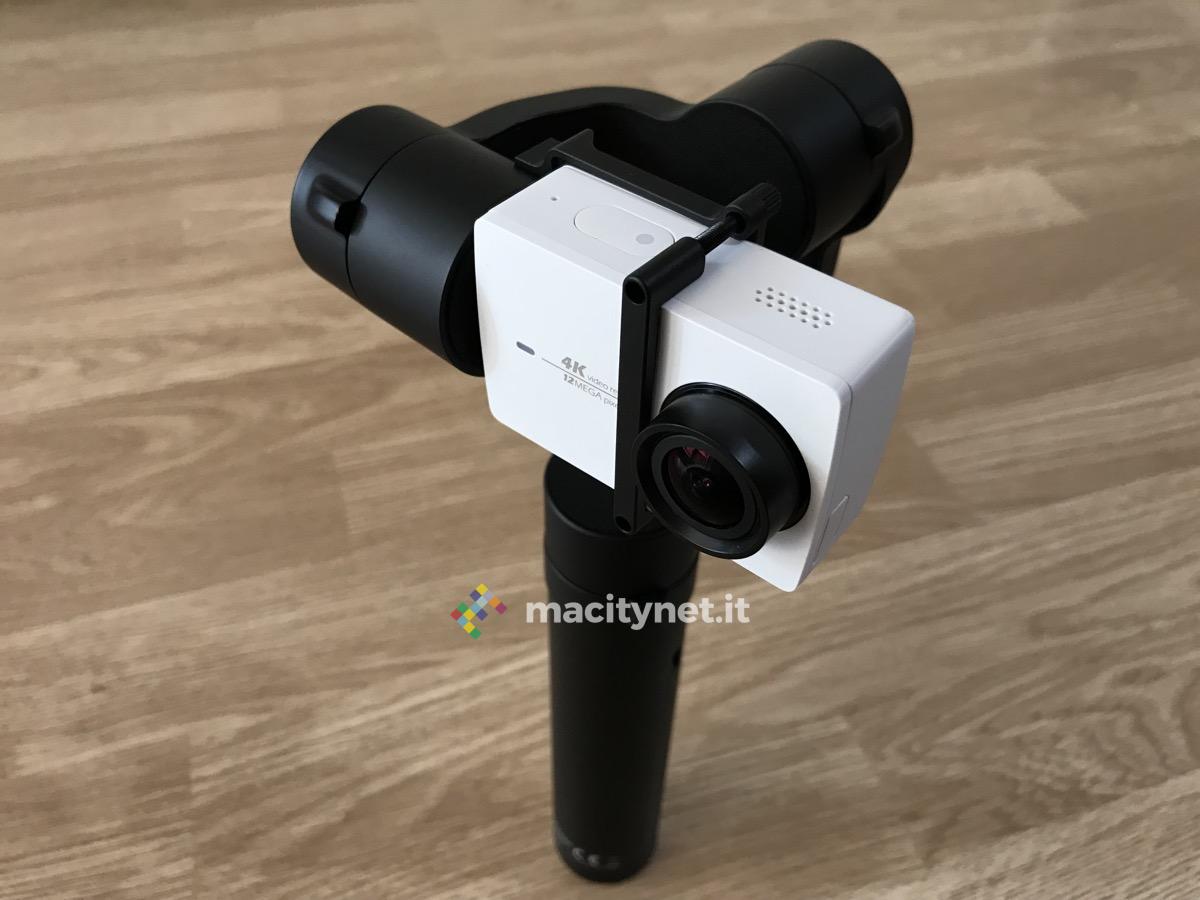
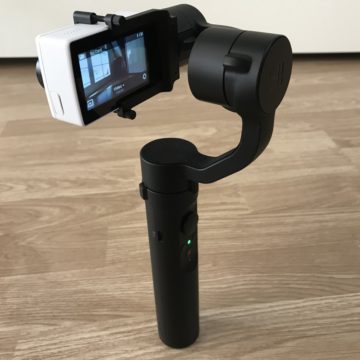
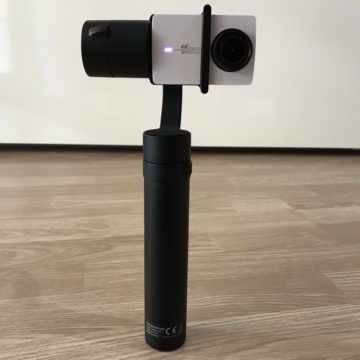
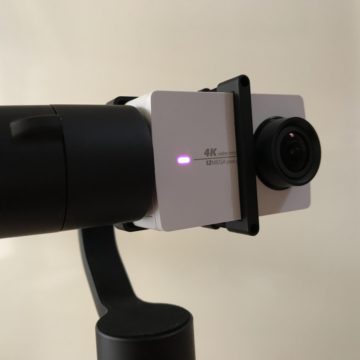
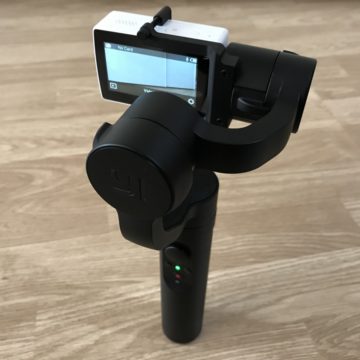
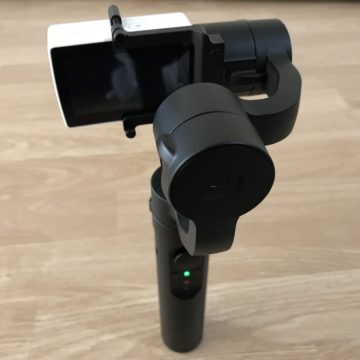
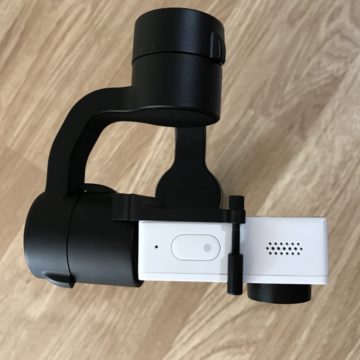
And in fact, thanks to the integrated Bluetooth, the gimbal is able to match, without any problem or delay, to one of the compatible Yi action cameras, thus allowing you to manage shooting and recording from the appropriate REC button on the stick. A promo pairing with the camera is sufficient to permanently combine the gimbal and the action cam: the pairing, therefore, does not have to be carried out every time it is switched on. The system has always worked during our tests, and each time the camera and gimbal are switched on, they are found within a few moments, therefore immediately ready for recording via button.
Three recording modes
The control panel, beyond the button that controls shooting and recording, has several buttons, which are used to manage all the modes present on the gimbal. Upon power-up, the gimbal is activated in Pan mode by default. With this setting, the camera remains locked in a horizontal position and perfectly perpendicular to the plane. The gimbal ignores all up and down movements (Tilt), while following any rotation of the handle to the left and right (Pan).
To perform a fast Pan, simply turn your wrist and follow the movement of the gimbal horizontally. Obviously, it will not be possible to perform a very fast Pan, because the movements of the gimbal are always mediated by the motors, which serve precisely to obtain a soft recovery: in short, those who need to immediately move the camera from left to right, and vice versa, will not be able to to do it.

In this default mode, however, it will still be possible to move the camera vertically, through the special analog stick, which will manage the Tilt. Also in this case, of course, the movements will be soft and slow.
If Pan mode is probably the most usable solution, with a single click on the small button with the letter M, you will enter Lock mode. This locks the camera in a precise point and the gimbal will ignore any movement of the handle in all directions. In this way it will be possible to frame a specific subject, avoiding sudden movements and stresses of any kind.
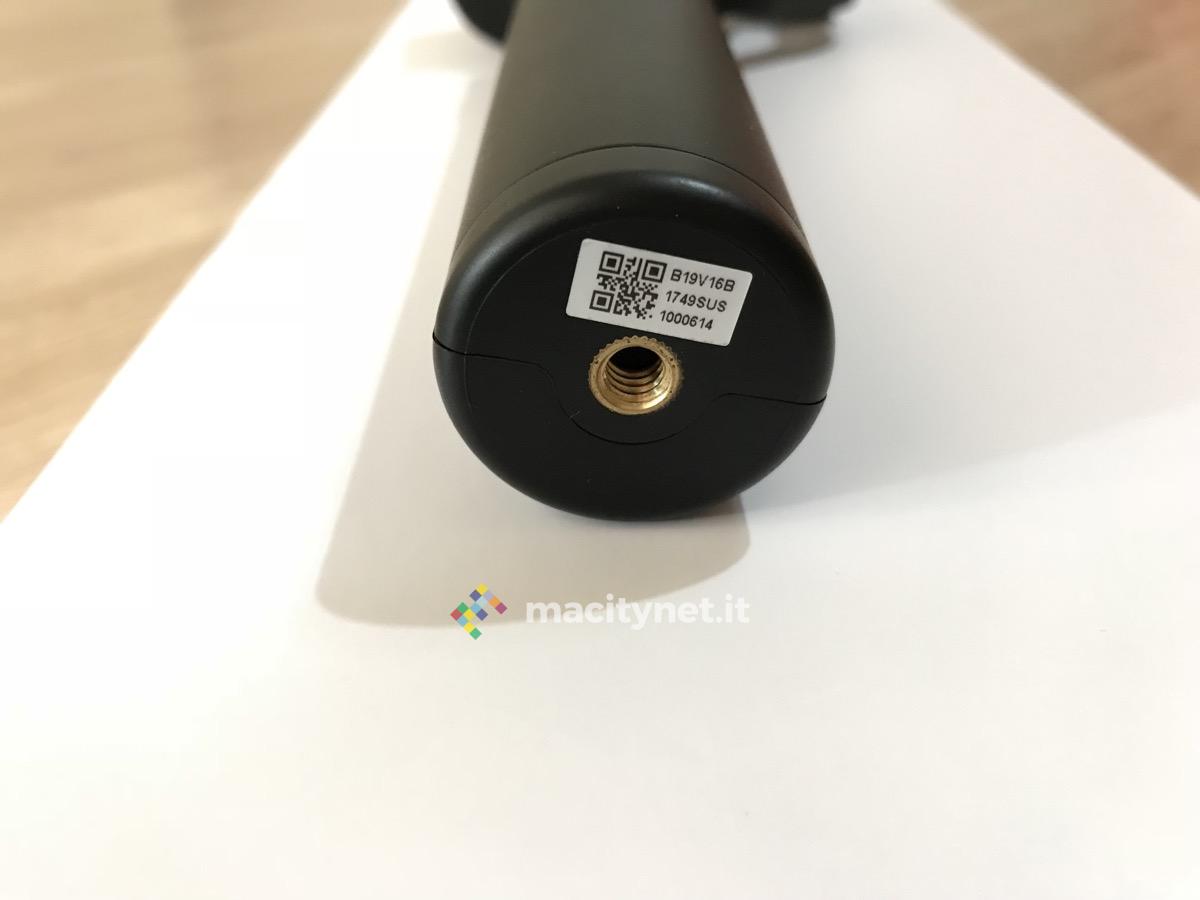
With a third click of the joystick, however, the gimbal will automatically switch to Tilt mode. In this case, the action camera lens will follow all the movements of the handle, which are perceived by the gimbal as a variation of the shot. It will then be possible to quickly frame in the ground by moving the handle in a position parallel to the ground, as well as it will be possible to obtain a perfectly vertical shot, simply by keeping the handle in the same position.
If initially this mode is perceived as the most difficult to use, with a little practice it is also the most versatile, because it allows you to obtain any shot, through the inclinations of the handle.
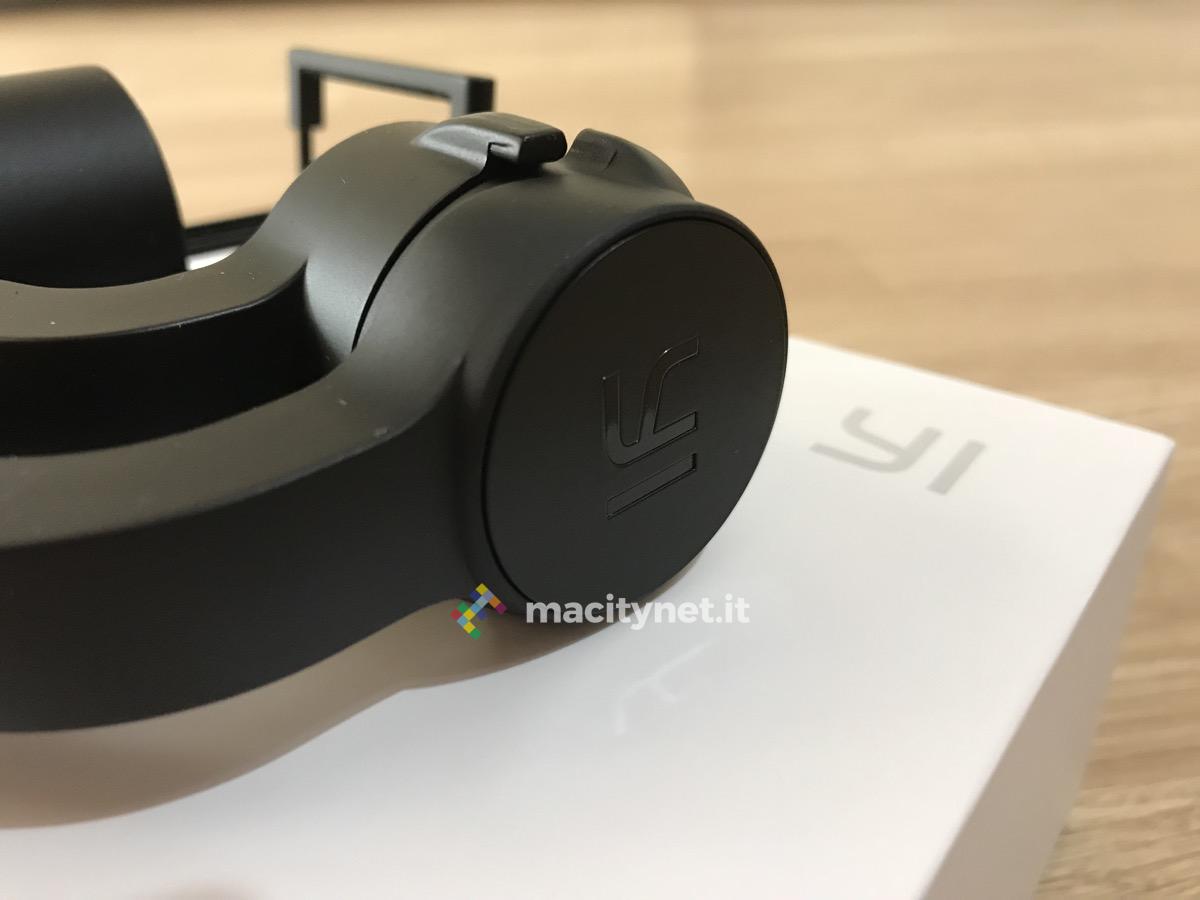
Finally, a double click on the button with the letter M will immediately start the Selfie function: the action cam will point straight to the user's face, therefore ideal for Vlogs or similar activities. The selfie mode has the exact same behavior as the standard Pan one, they are with the lens pointed at the user. To manage the vertical tilt of the camera, therefore, it will be necessary to use the stick.
Compatibility
The gimbal is advertised by the company as being compatible with Yi 4K, Yi Lite, and Yi 4K +. Obviously, these cameras are perfectly housed in the appropriate slot, also benefiting from the possibility of bluetooth pairing, to manage shooting and recording via a button on the stick. In any case, we have tried several other action cameras, which are known to have very similar dimensions to each other.
The result was positive: all the action cameras we tested, from other well-known brands, work with YI Action Gimbal. Of course, it will not be possible to use the shutter / record button and, therefore, you will have to use the buttons on the action cam on duty. In any case, it is a good thing that Yi Action Gimbal also works with other action cameras, otherwise it would have been too limited and linked only to the world of Yi Action Cams.
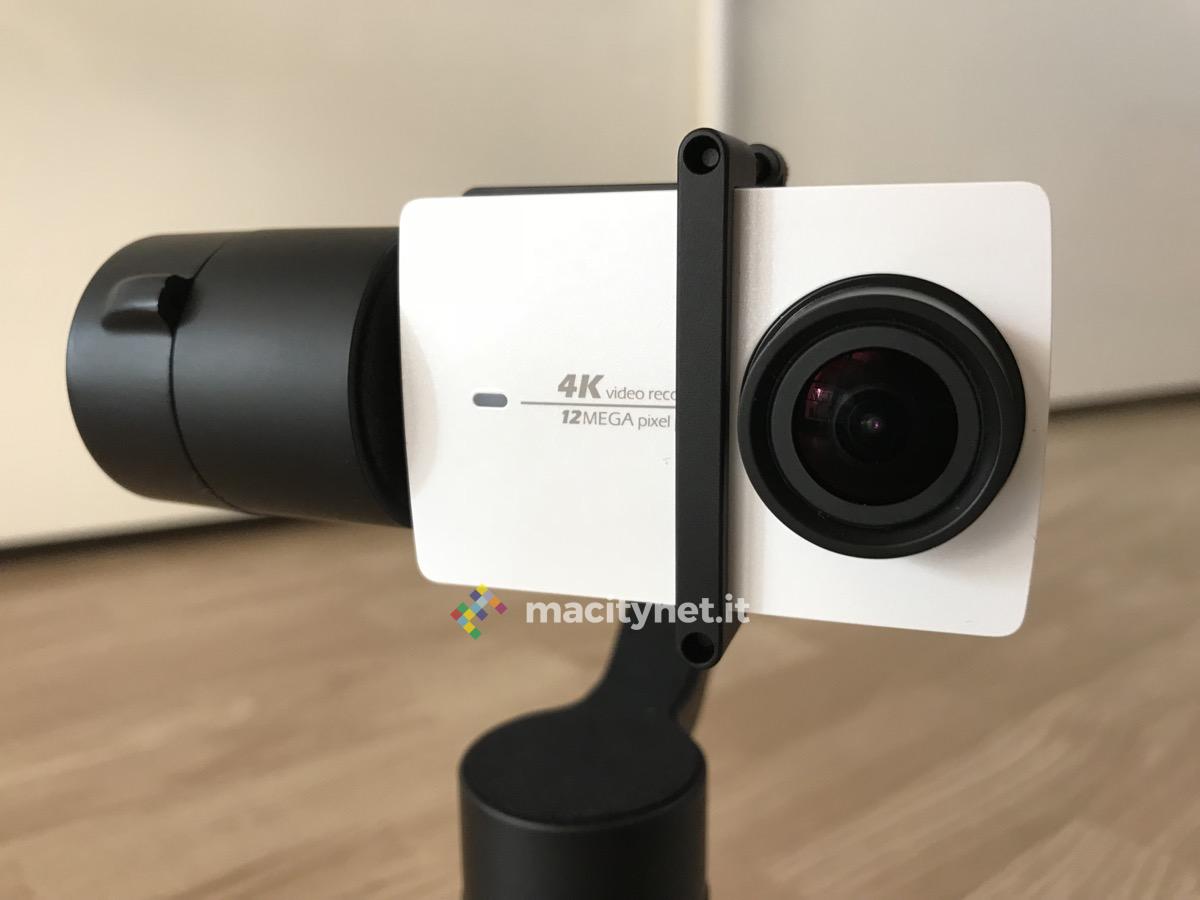
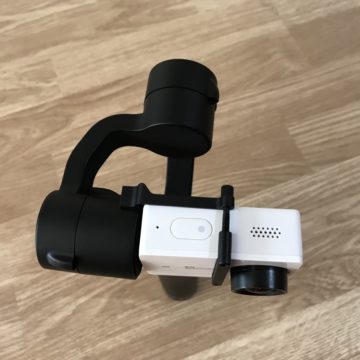
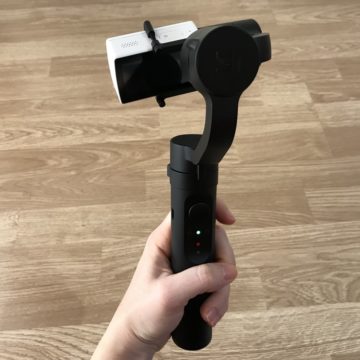
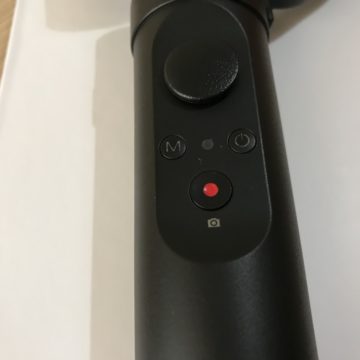
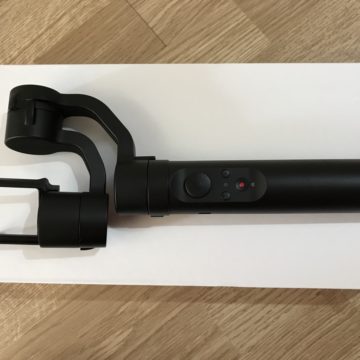
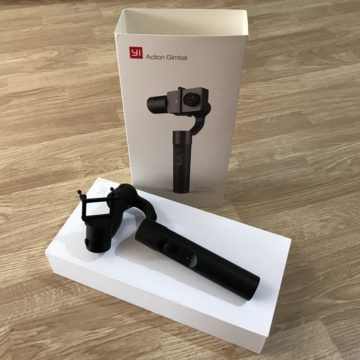
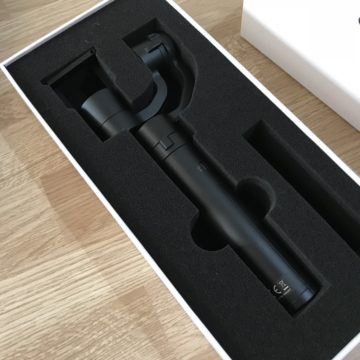
Shooting quality
In this case a lot also depends on the action cam used. During our tests we used a YI 4K, with the appreciable results in the video made below. Obviously, there does not seem to be a comparison between the shots taken with a gimbal, and others using only the action cam. Moreover, we used the gimbal without any care of any kind, making sudden movements, just to test the gimbal.
Our test shows, even side by side, images taken with and without gimbal, which certainly do not need comments. Yi Action Gimbal undoubtedly improves any type of shooting, making them much more stable, and making the camera immune to the strongest stresses. We performed the tests using stairs, climbing steep walls and walking on particularly uneven floors. The results are visible in the video just above.
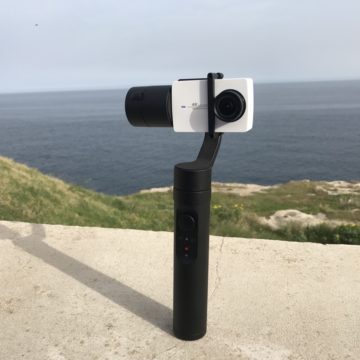
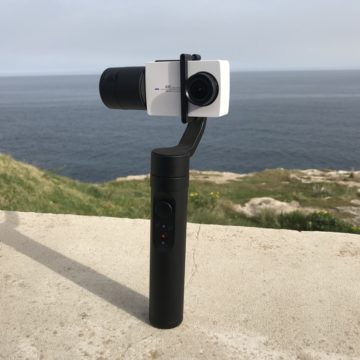
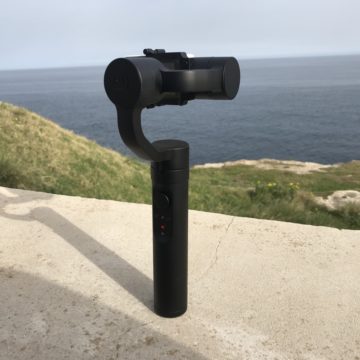
Technical notes
Among other technical features, Yi Action Gimbal offers the following angles of movement. For the Tilt the range is 320 °, while the Roll has an angle of 80 ° vertically and the Pan of 320 degrees, always vertically. The built-in battery is 850 mAh, which offers a variable autonomy between 6 and 8 hours. During our tests, we actually found similar data, therefore with a good autonomy. Obviously, it depends a lot on the use made of it; in the event that it is used with cameras other than Yi, it will be possible to save battery, not using the bluetooth to connect with the camera.
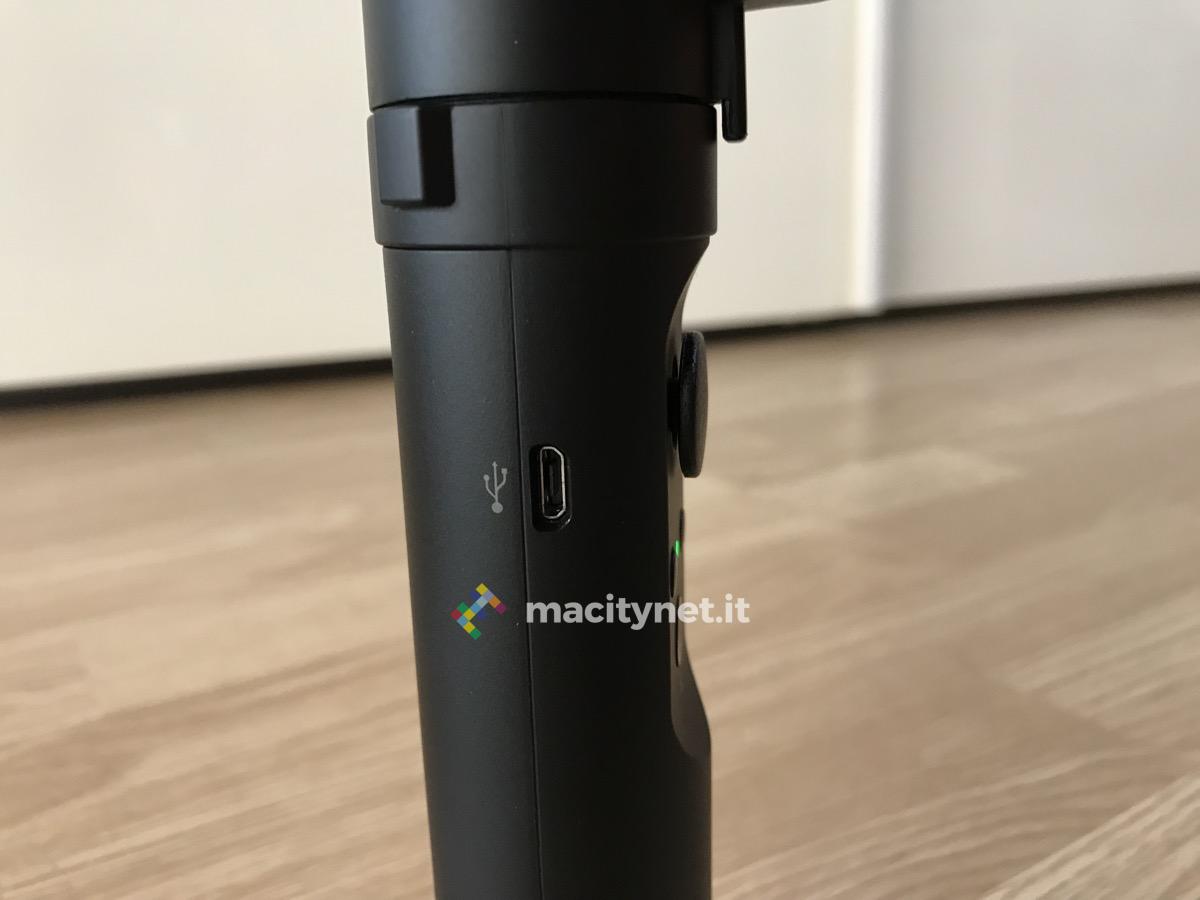
Conclusions
Yi Action Gimbal has full support for Yi action cameras, with the possibility of managing shooting and recording directly from the handle via BT, without having to touch the camera itself. Fortunately, it's also compatible with many other cameras, even without Bluetooth pairing support. It works well, lighter than other competitors, offers excellent autonomy. We put it under pressure by not paying too much attention to the movements of our arm, which were still cushioned as best as possible. It costs 199 euros on Amazon, and you can buy it directly at this address. PRO
AGAINST
,,





